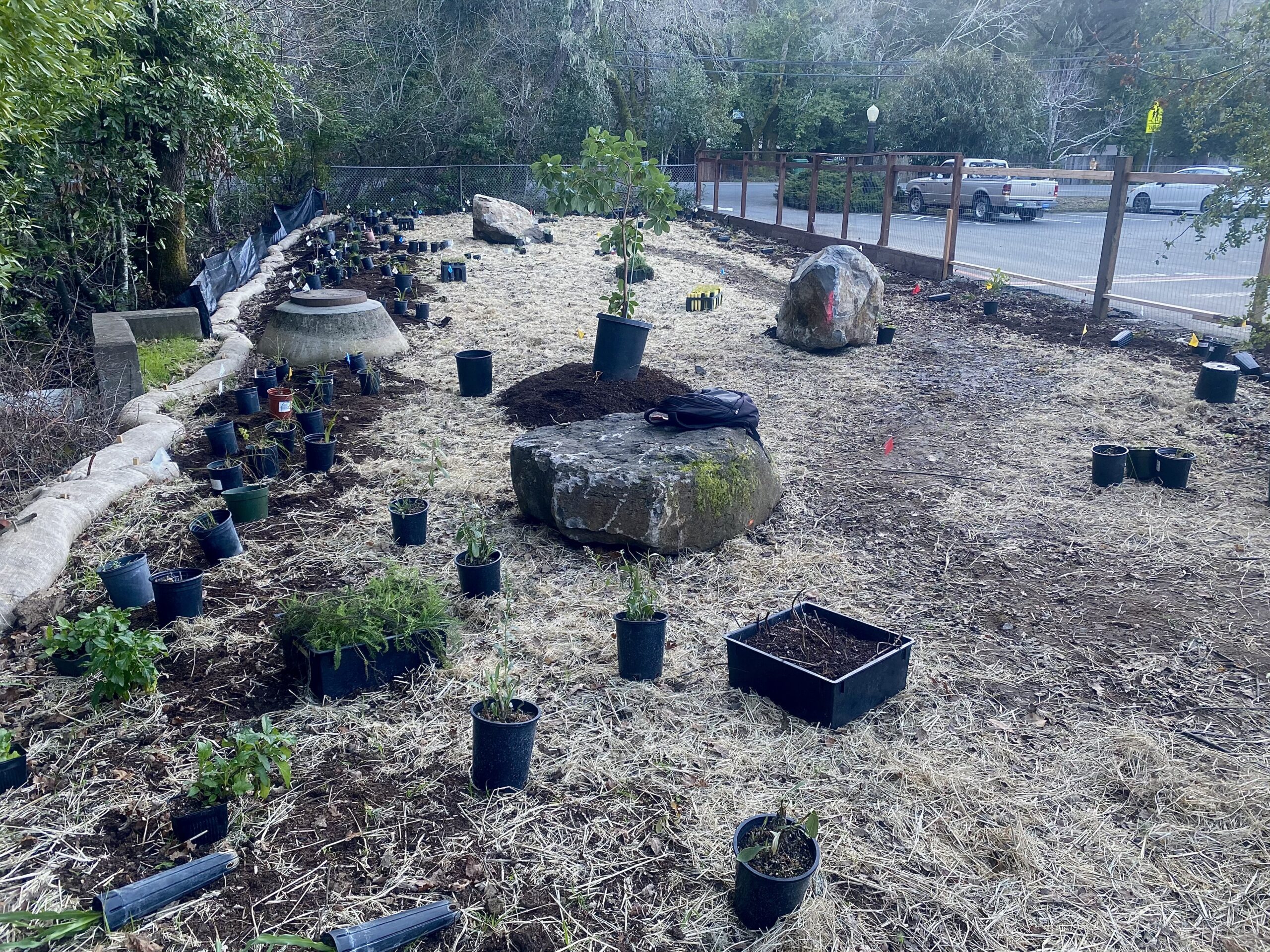| Contact: | Audrey Fusco, Native Plant Nursery Manager, audrey@seaturtles.org |
SPAWN Plants Habitat Garden at the San Geronimo Valley Community Center
In February 2019 the Salmon Protection And Watershed Network (SPAWN) won a pair of state grants to help restore streamside habitat in Marin County, California to prevent erosion. SPAWN partnered with the Lagunitas School District to restore 3,000 square feet of riparian habitat. In September 2020 we removed a dilapidated shed and sandbox near the San Geronimo Valley Community Center and Lagunitas School. Sand is the type of sediment that smothers fish eggs, and removal of the sandbox eliminates one potential source for fine sediment accumulation downstream.
In addition to improving fish habitat, by removing old structures that were in disrepair the land was cleared so that it could be restored to benefit both people and wildlife. With the help of volunteers, SPAWN planted hundreds of native trees, shrubs, perennials, vines, grasses and sedges, and annual wildflowers to create a habitat garden. The garden is located on the Lagunitas School grounds and adjacent to the parking lot of the community center, and its central location provides a new place for students and locals to relax and enjoy the outdoors. Four large boulders have been placed along a pathway through the garden to provide sitting spots, and two benches are in the process of being constructed by valley residents Alan Lubow and Melvyn Wright.
The garden contains more than 40 species of locally native plants which were selected to benefit both pollinators and birds. A riparian hedgerow was planted on the upper bank of Larsen Creek which contains serviceberry, hazelnut, coffeeberry, osoberry, pink-flowering currant, snowberry, and Pacific ninebark. Along the fence bordering the parking lot, a hedgerow containing sun-tolerant native shrubs such as coffeeberry, toyon, and hazelnut, provides a buffer between the garden and the parking lot. All of the shrubs which were selected are useful for bird habitat and most provide berries which are a source of food for birds.

SPAWN’s Watershed Biologist Ayano Hayes (left) and SPAWN’s Nursery Intern Eleanor Clark plant a madrone tree in the garden.
Between the creek and the parking lot is an open field which has been planted as a wildflower meadow. Grassy meadow spaces provide habitat for pollinators as well as nesting spaces for birds and habitat for other wildlife. The meadow contains purple needlegrass, California oatgrass, meadow sedge, and a wide variety of annual and perennial wildflowers including California poppy, sky lupine, baby blue eyes, tidytips, blue-eyed grass, buttercup, yarrow, beeplant, California goldenrod, California aster, and more. Near the garden entrance, several small mounded gardens contain sun-loving plants that are especially high in nectar and utilized by monarchs and other large butterflies, such as narrow-leaf buckwheat, hairy gumplant, and coyote mint. Along with providing nectar and habitat for bees, butterflies, and other beneficial insects, the plants selected for the garden include host plants for 20 species of butterflies and many species of moths.

Volunteers helped plant more than 40 species of locally native plants which were selected to benefit both pollinators and birds.
This project was made possible by The California Department of Fish and Wildlife Fisheries Restoration Grant Program. Additionally, many pollinator plants were contributed to the garden by Charlotte Torgovitsky of Home Ground Habitats. And, as always, we want to thank our fantastic crew of volunteers for helping with the creation of this wonderful new habitat garden. We hope you’ll come out to visit the new garden soon!




